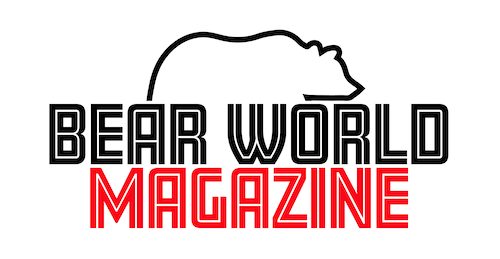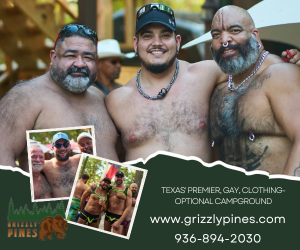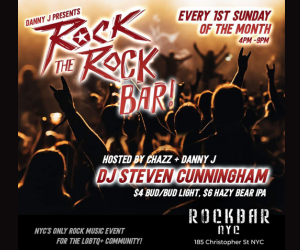Bear Tracks: The Eclectic Origins of Bear Spirituality
This column is intended to serve as an introduction to the emergence of bear spirituality, and not a promotion of it.
Gay men are born different. We know we are different before we understand what makes us different. We are wounded by the homophobia of straight people who fear our difference. The wounding in childhood and adolescence increases the sense of being different. That wounding also opens the door to inner exploration—for those of us who choose to explore.
Conscious exploration of this transformative shift in awareness, of turning the stigma that excludes and shames us, gives rise to a distinctly gay spirituality, which arises out of the transformative power of gay Eros. What follows is an overview of three gay tribes, where this has taken place– the Radical Faeries, the leathersex community, and, very recently, the bear community.
Humans are social creatures and we need connection and community. For us gay (bi, trans, queer) men the coming out process is a shared rite of passage in our longing to belong to a community and our longing for intimacy. For many, embracing this new community is the end of the journey. For others, however, this is just the beginning of a lifelong spiritual journey, guided by gay Eros. What sets us apart from society at large—our sexuality—is what brings us together in our own community. Our sexuality is at the heart of our spirituality.
The many flavors of this spirituality arise from a range of faith traditions, from the historical homophobia of monotheism (Judaism, Christianity, and Islam)—which has always denied our spirituality—to what might be loosely grouped under the umbrella of New Age spirituality—which opened the door for us to explore our gay spirituality.

New Age is eclectic. In terms of New Age spirituality, its adherents accept a holistic form of divinity which emphasizes the spiritual authority of the self. There is a common belief in a variety of semi-divine non-human entities that we can communicate with. New
Agers have a strong focus on healing and emphasize unifying science with spirituality. Founded in 1962, the Esalen Institute in Big Sur, California, was established to support alternative methods for exploring human consciousness. It became the center of practices and beliefs that make up the New Age movement, offering workshops in personal growth, meditation, massage, Gestalt therapy, yoga, psychology, ecology, spirituality, and organic food. Many leading lights of 1960s counterculture and other contemporary talents taught here—Ansel Adams, Joan Baez, Deepak Chopra, Matthew Fox, Buckminster Fuller, Aldous Huxley, Susan Sontag, and many, many more.
New Age values in the counterculture has roots in the arcane traditions of eighteenth and nineteenth century occultism (belief in mysticism and magic outside the scope of organized religions) and theosophy. Theosophy was founded by the Russian mystic who was known as Madame Blavatsky, who believed that the entire universe is illusion because everything is temporary. She held that the purpose of human life is spiritual emancipation, that the soul undergoes reincarnation according to a process of karma. Theosophy promotes values of universal brotherhood and social improvement.
These broad beliefs have discernable roots in Christian mysticism (the presence of the divine arises from within oneself), Buddhism (the goal of life is spiritual enlightenment), Native American religions (shamanism, humans as part of nature, and strong ethical values, including love, faith, charity, independence, and alcohol avoidance), and Jung’s belief that religion is a profound psychological response to the unknown (both the inner self and the outer world). For Jung, spiritual needs are “as real as hunger and the fear of death,” that governs how we try to live. The founders of Alcoholics Anonymous consulted extensively with Jung. AA’s Twelve Steps program of recovery through spiritual transformation is modeled on the Jungian myths of transformation—the quest myth, the story of separation, and the hero’s journey in recovery. Jung called these patterns common to many cultures “myths,” and the individual actors “archetypes.” Joseph Campbell explored these world myths in depth, for example in The Hero with a Thousand Faces and The Power of Myth.
Absent from Jung’s encyclopedia of world myths are any accounts of same-sex presence. In the twentieth century this has changed. Numerous gay men have experienced, explored, and documented the role of gay identity and same-sex love in the emergence of a uniquely gay spirituality. Harry Hay was one of the earliest pioneers. Hay was a learned gay man whose research notably focused on Eastern and Native American religions. Originally a communist, Hay founded the Mattachine Society, a secret gay activist organization in Los Angeles in 1950. The radical organization soon adopted a politics of assimilationism, rejected its commitment to radical change, and expelled its founder Harry Hay. Along with Mitch Walker, Don Kilhefner (GLF LA), and John Burnside, Hay went on to found the Radical Faeries in 1979. Hay defined gay men as a cultural third sex and railed against assimilationism as a soul-killing destroyer of our unique gay identity.

Founded in 1969 in the immediate aftermath of the Stonewall uprising, the Gay Liberation Front was the initial radical move that blew the door open for radical change. Perry Brass, an original member of the GLF, has pointed out that the GLF broke “all restraints against queer people–the church, the law, medicine, psychiatry, the [nuclear] family, the whole culture based on sexism from which homophobia came.” And they did this in three short years, 1969-1971. (Note: This is information from private communication with Perry. I have found no outside published recognition of GLF’s pre-Harry Hay role in laying the foundation for gay/queer spirituality.) Now called “intersectionality,” the GLF developed a broad radical political platform, “denouncing racism, declaring support for Third World struggles and the Black Panther Party…[taking] an anti-capitalist stance and attack[ing] the nuclear family and traditional gender roles.”
The Faeries are still an alternative gay men’s spiritual community, which Hay described as “a tribe with a unique way of perceiving the world, having unique gifts for and responsibilities to society as a whole.” Radical Faerie space “is spiritual space for our community of love and compassion, where we listen without judgement, share with each other in ‘great respect and affection’.” Faeries are very playful in their genderbending, consciousness altering, and sex play.
In Faerie space “we embrace the goodness, rightness, and beauty of ourselves.” Faeries wrestle with “interpretive questions to be judged in terms of the ethics of the world we now live in.” Put in mythic terms, Faeries are Mediators between the Seen and the Unseen, the Make-Believe and the Real, the Spirit and the Flesh; Faeries experience life ‘with awe and wonder;” “Faerie sexuality is a gateway to Spirit.” Hay understood Faeries’ spirituality to be intertwined with the grassroots politics of building community and building a consensus that seeks broad social change.
Hay argued our special gift as gay men is our “subject-subject consciousness.” Hay contrasted this with the subject-object dynamic of heterosexual society, where men presume cultural dominance over women, men being subjects and women being objects, or the property of men. Hay saw this as the source of society’s ills. Hay argued that gay relationships evolve from mutual respect and empathy for the other, the longing for a companion, a relationship between equals. Hay believed this was the greatest gift gay men could give to society at large, creating profound social change where social justice would prevail.
Radical Faerie cofounder Mitch Walker spearheaded a gay-centered psychoanalytic movement based on transforming what he saw as dysfunctional interpersonal dynamics among the Faerie founders. Hay was “rabidly anti-psychological,” leading Walker and Kilhefner to break with the Faeries. A Jungian psychologist, Walker discovered a “superhuman presence of phallic homosexual divinity.” This experience became the basis for him to identify the archetypal configuration of the Double, separate from the masculine/feminine archetype of the heterosexual. This was an alternative to Hay’s understanding of the transformative power of gay Eros. The Double is the gay archetype of Brothers, first manifested in the love of Gilgamesh and Enkidu.
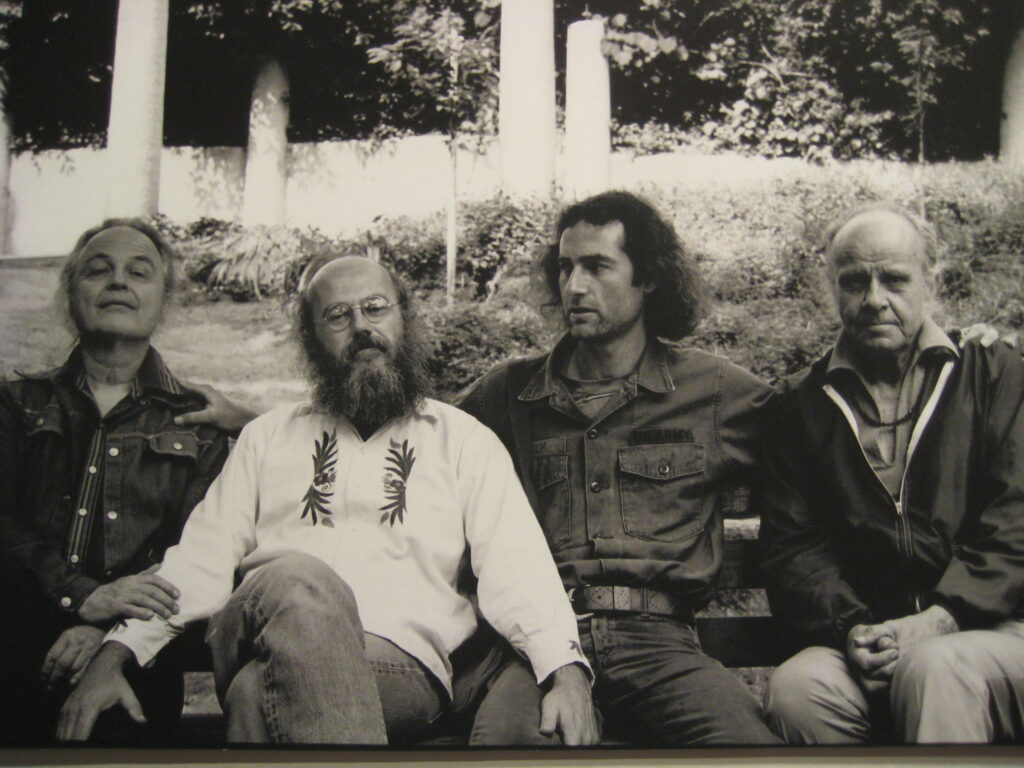
In recent decades this has crystallized into a tradition of same-sex-focused spiritual activities and literature. Toby Johnson has explored the role of gay identity in the transformation of human consciousness. Will Roscoe has studied the Native American two-spirit tradition and shamanism (which originated in the far northern Europe and Siberia). Christian de la Huerta has articulated the spiritual roles of LGBTQ people, which he organizes into ten archetypes: catalytic transformers, outsiders, consciousness scouts, sacred clowns and eternal youth, keepers of beauty, caregivers, mediators (the In-Between People), shamans and priests, the Divine Androgyne, and gatekeepers. [Definitions of these archetypes may be found here: http://www.tommoon.net/2005/01/04/spirit-matters-iv-ten-queer-spiritual-roles/]
In The Soul Beneath the Skin (2002), David Nimmons wrote about “the unseen hearts and habits of gay men.” [Toby Johnson’s interview with David Nimmons may be found here: https://tobyjohnson. /review-nimmons-The-Soul-Beneath-the-Skin.html]. Notable among this “striking range of cultural innovations in social practices” are our low level of public violence, our volunteerism, our patterns of intimacy and interpersonal connectedness, our distinct patterns of caretaking. “Millions of gay men,” Johnson has observed, “have built the planet’s most unabashedly sex-affirming culture.” Word has been prevented from getting out for two reasons. Johnson points out that “[a]t best, our practices are viewed with studied silence; at worst, media view and dissect our customs with wide-eyed alarm and ferocious distrust.” And as Nimmons has pointed out, the reigning orthodoxy of queer academic discourse argues that “’gay’ is an illusory, privileged, white-derived, Western, urban-commercialized pseudo-identity.” For queer theorists, Nimmons argues, “gay” and similar terms are “artifacts of a powerful symbolic social order rather than representing any objective or objectifiable fact or universal identity, let alone any essential attributes of who we are.” What is left out here is the fact of lived experience–social, sexual, and spiritual.
Mark Thompson (who was married to gay Episcopal priest, civil rights, antiwar, and gay activist Malcolm Boyd) noted that when the founding circle of Mattachine Society split apart, two members went on to join the Satyrs, the first gay leathermen’s club. Thompson explored how “a new type of community based on intense masculine sexuality and the fulfillment of previously unmet need” was created. Also arising out of Christian, pagan, New Age, and Native American beliefs, radical sex (BDSM) ritual is another doorway into the inner mysteries of the soul. The approach and the practice are also playful in nature, albeit serious play. Ecstatic revelation as spiritual practice was labeled “sex magick.”

From these roots a uniquely bear spirituality has begun to emerge. In 2000 Ron Suresha led an online discussion with Al Cotton (founding editor of Visionary: The Newsletter of Gay Spirit Visions and coordinator of Atlanta’s Body Electric), Alex Damman (motorcycle enthusiast and Radical Faerie), and Jim Mitulski (gay activist and pastor in MCC, the gay Christian church). In their discussion they considered several potential elements of a bear spirituality: the bear is itself an archetype. Mitulski made several observations about the potential for a bear spirituality: “Bearness represents a return to ourselves, not an alternative identity.” “Hibernation is a spiritual concept, an intentional down time in which we prepare for a period of growth, activity, and creativity.” “Appetite is a metaphor for desiring larger-than-life experience.” “Bear community also has a healing dimension, not just from the exclusions we experience as adults in the gay community, but also as a corrective to childhood or adolescent exclusions.”
In 2003 Barth Cox made a documentary called Asking to See the Soul: A Video Documentary Exploring the “Coming Out” Experience of Men Identifying with a Gay Subculture. This was the first documentary, structured as an ethnographic study, to examine the new bear community through interviews with self-identifying bears, attending bear events, and grounding his approach through extensive social science and gay activist writings. Interviewees express a broad range of understandings and attitudes on being a bear. Barth captures the threshold experience for those embracing a second gay identity, finding a home from the exclusion from the wider gay community. As the title suggests, this is potentially the first step toward an authentic self, the revelation to oneself of their own soul.
Since their beginning bears have found playfulness a fundamental part of their identity. Even all the animal subcategories (otter, wolf, panda, and so forth) are playing with identity. With the rigid application of taxonomy (a system of classification) in queer theory, it’s easy to miss how bear play with the concept. Anyone who doesn’t fit a bear category is always welcome as a “bear admirer.”
Freddy Freeman reports he had a vision that led him to create the Bear Your Soul community in 2013 at Easton Mountain, a gay men’s spiritual retreat center in the mountains outside of Saratoga Springs, NY. Easton Mountain is also the site of gatherings of polyamorous men, the kinksters community, Body Electric, and others. I attended the first summer gathering in 2013 and reconnected at the summer gathering in 2023. Over those ten years Bear Your Soul has grown into a movement that seeks “to bring more brotherhood and acceptance to the bear community. We honor the body, mind, and spirit of all our brothers. We value heart-centered interaction, authenticity, respect for ourselves and others, healthy sex positivity and inclusion. We build community, personal growth, and brotherhood through retreats and workshops for men of all shapes, colors, and sizes.”

Bear spirituality, airing from gay Eros, is our special gift to the world. Deep, growing intimacy requires the integration of spiritual and emotional energy with the physical body. This merging of hearts through erotic connection is what Harry Hay called “subject-subject consciousness.” In the words of Joseph Campbell, “Follow your bliss.”
For the sake of full disclosure I share my own introduction to and exploration of bear spirituality.
- In 2007 Bo Young published my essay “Bear Spirit” in the White Crane Journal. In it I articulated my own spiritual journey as a gay man into a heart-centered gay men’s tribal community. (I had had a spiritual awakening as a result of doing the Steps of AA). I had experienced the ecstatic revelation of my spiritual journey as a bondage bottom in the leather community. I had discovered a home among the Billys, a Radical Faerie-related community in northern California. In a tribal drumming and chanting Billy ceremony all my defenses shattered and I was spiritually “reborn.” I found myself invited to embody and give voice to the gay archetype of the Bear.
- The 2023 Bear Your Soul gathering was another major turning point in my life, both personal and professional. After the isolation of the covid pandemic, I was frequently moved to tears of joy finding myself once again physically in a loving gay men’s spiritual community. My various communities have all come together, where I now find and practice bear spirituality. I was caught completely by surprise when I was presented with the first Bear Your Soul Pioneer Award. It read: “Your life and work are the bedrock of the values that led to the creation of Bear Your Soul.”
******************
For further information please check out these websites:
Toby Johnson http://www.tobyjohnson.com
Mitch Walker https://treeroots.org
Will Roscoe https://willsworld.org
Easton Mountain https://www.eastonmountain.org/about-us/mission
Barth Cox’s documentary https://scholarworks.uno.edu/cgi/viewcontent.cgi?article=1028&context=td
*******************
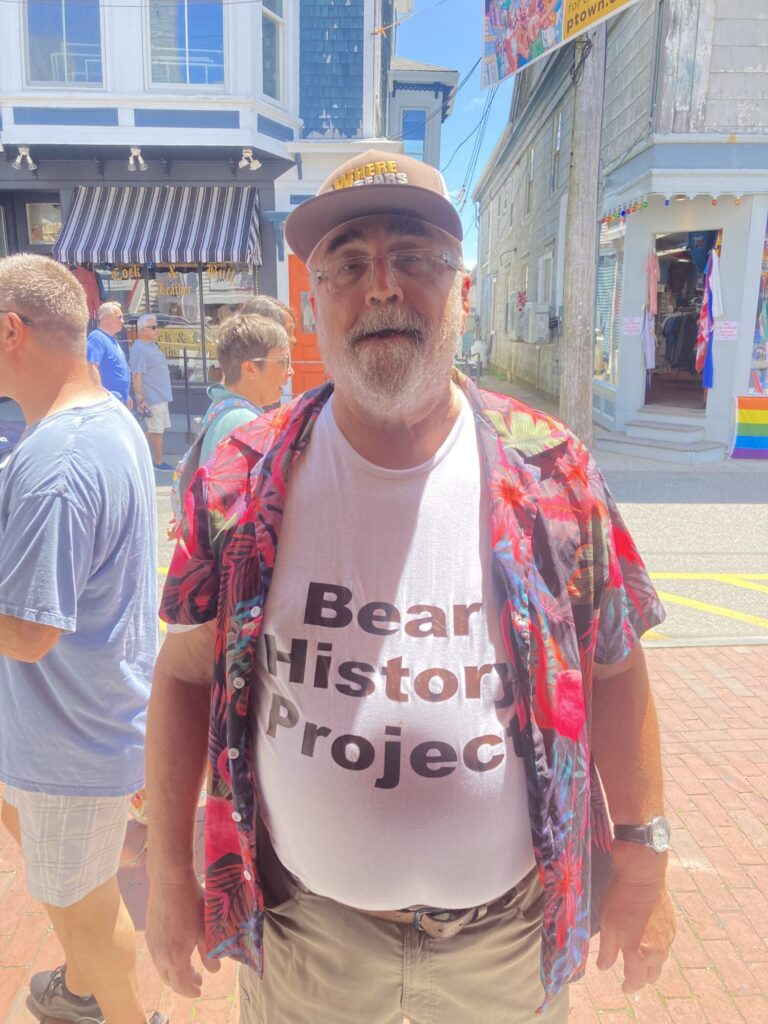
Help Les K Wright in his quest to document bear history by joining the Bear History Project International where you and a group of like-minded individuals can exchange ideas and help to preserve bear history and culture.
